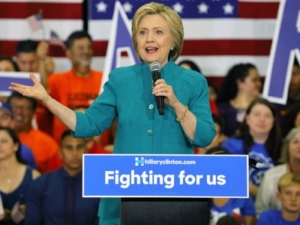 By Nicki Gilmour
By Nicki Gilmour
Closing the investment gap for women as well as the better- documented pay gap needs to happen. What is the investment gap? And why are most women, even highly paid professional women still missing out? Sallie Krawcheck just wrote a post about the cost of not realizing what we are missing financially by not investing properly on LinkedIn.
Sallie is inviting theglasshammer.com readers to join Ellevest, her new women- orientated advisory for women (and men too) to close the investing gap. I caught up with Sallie this summer and she is someone who I admire greatly and Sallie is a woman who has been there, formidably at the top of the best financial institutions in the world for many years. I asked her why should we care about solving the investment gap?
Sallie responded,
“The investment gap is real and closing it is the best professional advice that nobody is telling you. We need to talk about the real costs of a career break and the real cost of earning less and investing less. We want to empower the individual. I am about unleashing the power.”
Why should we want both men and women managing our money?
A recent survey conducted by The CFA Institute called “Gender Diversity in Investment Management – New research for practitioners on how to close the gender gap” found that most female CFA members (70%) and nearly half of all CFA members in total (48%) believe that mixed gender teams of investment professionals lead to better investment performance results because of more diverse viewpoints.
Interestingly, these are the people who are involved in funds, and often run them directly. In the same survey, institutional investors also scored high in believing there was positive aspects to having a gender diverse team in place as seen in the California State Teachers’ Retirement System encouraging State Street Global Advisors to create the SSGA Gender Diversity Index ETF (ticker: SHE) in 2016 and seeded it with a $250 million investment.
Meanwhile, in the same study, retail investors were less convinced in the value of women working in wall street bringing higher returns with nearly 50% of those surveyed believing diversity does not matter when it comes to who manages money.
We can conclude from this that the people least close to the process saw the least value in it. That means people like you and me, and people who are not like you and me, can have a range of differing values, education and identities and yet have the same sexist ideas about who we think should lead companies and run money for us.
There is research including the most recent piece from Credit Suisse last week that suggests adding women makes a difference, obviously the right women, but we would say the same about men so we have to be careful to not over scrutinize this concept.
I am a fan of testing reality against research and Joe Keefe, President and CEO of Pax World Management LLC is a leader who is seeing real results.
We caught up last week and chatted about the Pax Ellevate Global Women’s Index Fund, which is chaired by Sallie Krawcheck, and has just reported a recent milestone, outperforming the MSCI World Index* for the two-year period ending June 30, 2016 and has $100 million in assets under management.
Joe is a man who gets it and one of the first men to grace our column of the same name. What is it that creates this higher performance when women are present in decision-making seats? Joe comments,
“I believe that having higher female representation at board and senior management level is a causal factor, not just a correlative factor, for higher performance because it is the entire corporate governance structure that tends to improve with women in place.
Pressing Joe on the finer details on being sure that the factor that drives the performance, he told me,
“We try to keep all other variables neutral to allow for an apples to apples comparison for performance analysis.” And added, “This is the only global index of its kind and beyond the research, this is real money from real investors in real time proving the point, not theory.”
How can we link investor gains to the talent pipeline inside firms?
As I reported earlier this year, rather than wait for companies to take action themselves or rely on legislation to be enacted, the Pax Ellevate Global Women’s Index Fund is the only global fund and the original index. State Street’s U.S. based SHE Index and other new funds also provide a way for people to fight the gender gap directly by investing in companies that put a premium on women in leadership positions.
Morgan Stanley launched a proprietary gender-diversity framework for ranking more than 1,600 stocks globally this year citing,
“Calls for more female participation in the economy have grown louder, often based on political or cultural arguments founded on fairness. Yet, a persuasive argument for diversity and equality can also be anchored to the bottom line, where ensuring that more women are working and leading in the workplace is simply good business, especially for investors who not only care about the ethics, but also want returns.”
To make sure this theory of ensuring more women are leading becomes action, the onus falls on three groups.
Group 1: The investors have to vote according to their belief in diversity. That means you and me as well as the institutional investors.
Group 2: The intermediaries need to better inform clients better and this could involve reducing the biases of some financial planners and advisors who regardless of being male or female harbor ideas and loyalties that do not help their clients.
Group 3: The other group that needs to do something to ensure that there are companies to list on these indices is of course the leaders and talent process people inside firms.
Sometimes the research on diversity enhancing performance is lost on gatekeepers such as financial advisors and consultants who often do not understand the importance of diversity. I have had a personal experience with that myself with a very “old fashioned” shall we say female advisor who told me point blank not to invest in a women’s fund (and could not seem to say the LGBT acronym). I asked Joe Keefe what to do in these situations and he told me that people should invest directly in the Pax fund or find advisors who understand the benefits of seeing the research in action.
Joe Keefe comments,
“I truly think that we are heading towards higher numbers of women on boards and in senior management teams, and I believe that we could reach 40/50% female representation in our lifetimes. More and more people are realizing that the research is right and the returns are there.”
Sallie Krawcheck, chair of the Pax Ellevate fund agrees,
“It is simply smart business to invest in women and we believe that this investment case will continue to be borne out over time by the performance of this Fund.”
Awareness is the first step, and people like Sallie Krawcheck and Joe Keefe are giving us the chance to put our money where our mouth is and maybe make up for that pay gap that most of us are experiencing (whether we choose to believe it or not.)
Save
 By Nicki Gilmour, Executive Coach and Organizational Pyschologist
By Nicki Gilmour, Executive Coach and Organizational Pyschologist








